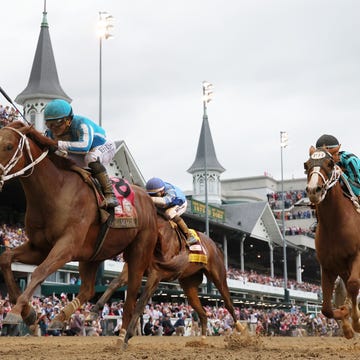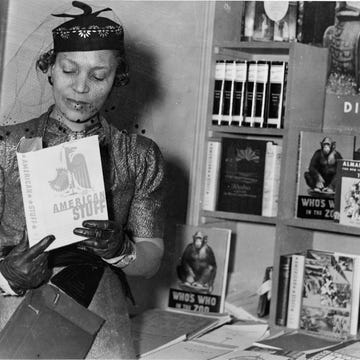For better or worse, no one captured the glorious and garish excesses of the Jazz Age like F. Scott Fitzgerald and The Great Gatsby. But while the author’s 100-year-old magnum opus may remain the most enduring depiction of a certain moneyed and hedonistic Long Island set, this land was already colonized by the ultra-rich decades before during the height of the Gilded Age. At the turn of the 20th century, railroad tycoons, steel magnates, and their fellow masters of the universe transformed vast swaths of North Shore farmland into some of the era’s most magnificent estates, rebranding the region as a place with one of the greatest concentrations of wealth in America, and earning it a nickname: the Gold Coast.
If Gatsby was the ultimate symbol of nouveau riche vulgarity, one could argue he was simply following the examples set by the Vanderbilts, Morgans, Astors, Whitneys, and Woolworths who came before him, and who feverishly commissioned extravagant imitations of French châteaux and English castles and Italian villas decked out in hundreds of acres of manicured gardens, pools, polo fields, and tennis courts, employing the same hot shot architects (ie, the Stanford Whites of the world) behind their Fifth Avenue palaces and Newport summer piles. Even Theodore Roosevelt joined the migration, though he opted for a relatively modest shingle-style cottage (Sagamore Hill).
In its prime, the Gold Coast was littered with more than 500 mansions. By the time Fitzgerald and his anti-hero entered the picture, this sybaritic microcosm, while still flush with cash and still entertaining fabulously, had begun its irrevocable decline. And like hulking metaphors for the erosion of the American dream and the rotting of social mores, hundreds of these castles crumbled back into the earth. Not all, of course. Some have stayed in private blue-blooded hands, while others were turned into exclusive country clubs (the Vanderbilts’ Deepdale), event venues (Otto Kahn’s Oheka), and museums. The luckiest few, like the Phipps family’s Old Westbury Gardens (top image), have remained perfectly preserved in amber.
And although the Gold Coast has since slipped from its perch as Long Island’s wealthiest, and flashiest, enclave, there are still ways to pick up on Gatsby’s trail today. Here is how.
Where to Stay
“A colossal affair by any standard—it was a factual imitation of some Hôtel de Ville in Normandy, with a tower on one side, spanking new under a thin beard of raw ivy, and a marble swimming pool, and more than forty acres of lawn and garden. It was Gatsby’s mansion.”
Fitzgerald—who lived in a rented house in Great Neck for two years with Zelda and their daughter Scottie, before they moved to France in 1924—is said to have been inspired by an amalgam of estates in the neighborhood, including Alva Vanderbilt’s Beacon Towers (demolished in 1945) and Oheka Castle, above.
The latter was something of a revenge project for its owner, the German-born financier Otto Kahn, who set his sights on the Gold Coast after being denied entry into the Waspy clubs of Morristown, New Jersey, for being Jewish. Around 1914, he acquired a 443-acre plot of land, hired Delano & Aldrich to build a massive fireproof château (one of the first of its kind) with 127 rooms and an indoor pool, and commissioned the Olmsted Brothers (sons of the legendary Frederick Law Olmsted) to do the grounds, which also included tennis courts, an 18-hole golf course, a landing strip, a greenhouse, and stables. By the time of its completion, Oheka Castle was the second largest private home in the country—after George Vanderbilt II’s Biltmore, in Asheville—with a full-time staff of 126.
After Kahn’s death in 1934, the property went through decades of changing hands and general neglect before becoming what it is now: a 32-room hotel and wedding venue. It has hosted the nuptials of an eclectic group of celebrities, including a Jonas brother (Kevin), Megyn Kelly, and even the ill-fated Huma Abedin and Anthony Weiner, whose ceremony was officiated by Bill Clinton. Oheka will also be familiar to Succession fans. That infamous Boar on the Floor episode? Filmed here.
Unfortunately, there aren’t many other hotel options in the area, though Manhattan—and its riches of luxurious Old World gems, from the St. Regis to the Carlyle, to the soon-to-reopen Waldorf Astoria—is less than an hour away.
What to See
The Gilded Age mansions here may not be as conveniently clustered together as they are in Newport, but Long Island’s surviving gems are best discovered by car anyway. “I like to drive around and explore,” says Gold Coast grande dame Lori Hirshleifer, the fourth-generation co-owner of Hirshleifers, her family’s 115-year-old luxury fashion emporium in Manhasset (more on that below). “In towns like Locust Valley, Cold Spring Harbor, Glen Cove, and others, you can see the remnants of some of these grand old estates and imagine what it must have been like to live in them.”
The crown jewel here is undoubtedly Old Westbury Gardens. The 23-room Carolean Revival mansion—and 200 acres of landscaped grounds—was built in 1906 by John Staffer Phipps, scion of the Phipps dynasty, and today it is still owned by members of the family, who helped turn it into a beautifully preserved house museum. The interiors are lovely—linger over the John Singer Sargent portrait of Mrs. Henry Phipps and her baby grandson Winston Guest (future husband of C.Z. Guest) in the dining room—but try to go on a nice day so you can witness the full glory of those exquisite gardens.
Closer to the coastline there is Sands Point Preserve, a massive campus that is home to three landmarks: Castle Gould, built by Howard Gould in 1904 to resemble Kilkenny Castle in Ireland; Hempstead House, a Tudor-style behemoth that was originally Howard’s before he sold it to a Guggenheim in 1917; and Falaise, a Normandy-style manor house built by another Guggenheim in the ’20s (and where Charles Lindbergh, a guest of the family, wrote his autobiographical WE). Aside from serving as a sprawling reminder of a bygone grandeur, Sands Point hosts concerts and festivals, and is a great place to bring the kids (and dogs) for hikes and picnics.
Speaking of entertaining the kids, the Planting Fields Arboretum is a 409-acre Olmsted Brothers-designed botanical wonderland that has a robust calendar of experiences, workshops, and activities to get them off their phones and out into nature. And yes, there is a mansion here, too (Coe Hall). And children and adults alike will definitely find something interesting at the Vanderbilt Museum & Plantarium, which is a mansion, marine and natural history museum, and planetarium all in one—and it happens to have one of the best views of Long Island Sound. William K. Vanderbilt II built his waterfront Spanish Revival home, called Eagle’s Nest, in 1910, and then added to the property over the next two decades, eventually building a museum to house his eccentric collection of marine specimen and other curiosities.
Finally, Gatsby isn’t the only one celebrating a centennial—1925 was also the year that Art Deco was born. The Nassau County Museum of Art—which is housed in (what else?) a pedigreed Georgian Revival mansion that Henry Clay Frick bought for his son in 1919—is hosting an exhibition on the radical arts and design movement (through June 15).
Where to Shop
“He took out a pile of shirts and began throwing them, one by one, before us, shirts of sheer linen and thick silk and fine flannel…While we admired he brought more and the soft rich heap mounted higher—shirts with stripes and scrolls and plaids in coral and apple-green and lavender and faint orange, with monograms of Indian blue.”
Gatsby may have been tortured by his unrequited love for Daisy, but at least he understood the power of retail therapy. The millionaire had his clothes shipped from England each season, though he would have found perfectly suitable options closer to West Egg at, say, Hirshleifers, an independent, family-run department store that has been around since 1910 (they started as furriers in Brooklyn before moving to their current home in Manhasset in 1965). Today it’s the modern toff’s one-stop shop for a well-curated selection of fashion from the likes of The Row, Sidney Garber, Bode, and Issey Miyake. A fabulous retail experience is also the M.O. at Mitchells—a family-operated company that counts Ralph Lauren and Brunello Cucinelli as longtime fans—which has a store in Huntington. That they just became the owners of Dallas OG Stanley Korshak should say plenty. And if your dips into Gold Coast history have inspired a redecorating project, stop by Greenwich Living Design for one-of-a-kind vintage furniture.
Where to Eat
For a post-spree lunch, head to Kerber’s Farm for chicken sandwiches, veggie paninis, and BLTs. Save room for a treat: “The biscuits are out of this world,” Hirshleifer says. And for dinner? “My new favorite is Okaru, a Japanese restaurant that just opened in Roslyn.”
For classic Greek diner burgers, go to Taby’s, an Oyster Bay institution; Centro Cucina for old school Italian; Diane’s for fresh salads and sugar cravings; and Besito for Mexican (and fantastic margaritas). If you’re cooking at home, pick up provisions and produce from Youngs Farm: “It’s especially gorgeous in the spring and summer,” Hirshleifer says. But it’s also worth a visit just for the history. The farm was founded in 1893—that is, before the robber barons all flooded in and turned these plains into their battleground for real estate oneupmanship—and it has held on to its land and remained in the same spot since. Fitzgerald might have found some poetic justice in that.
Leena Kim is Town & Country’s Editor, covering the travel, jewelry, style, arts and culture, education, and weddings beats. She has no priors—she has been at the magazine for 11 years, having started her career at T&C as the assistant to the editor in chief.

















